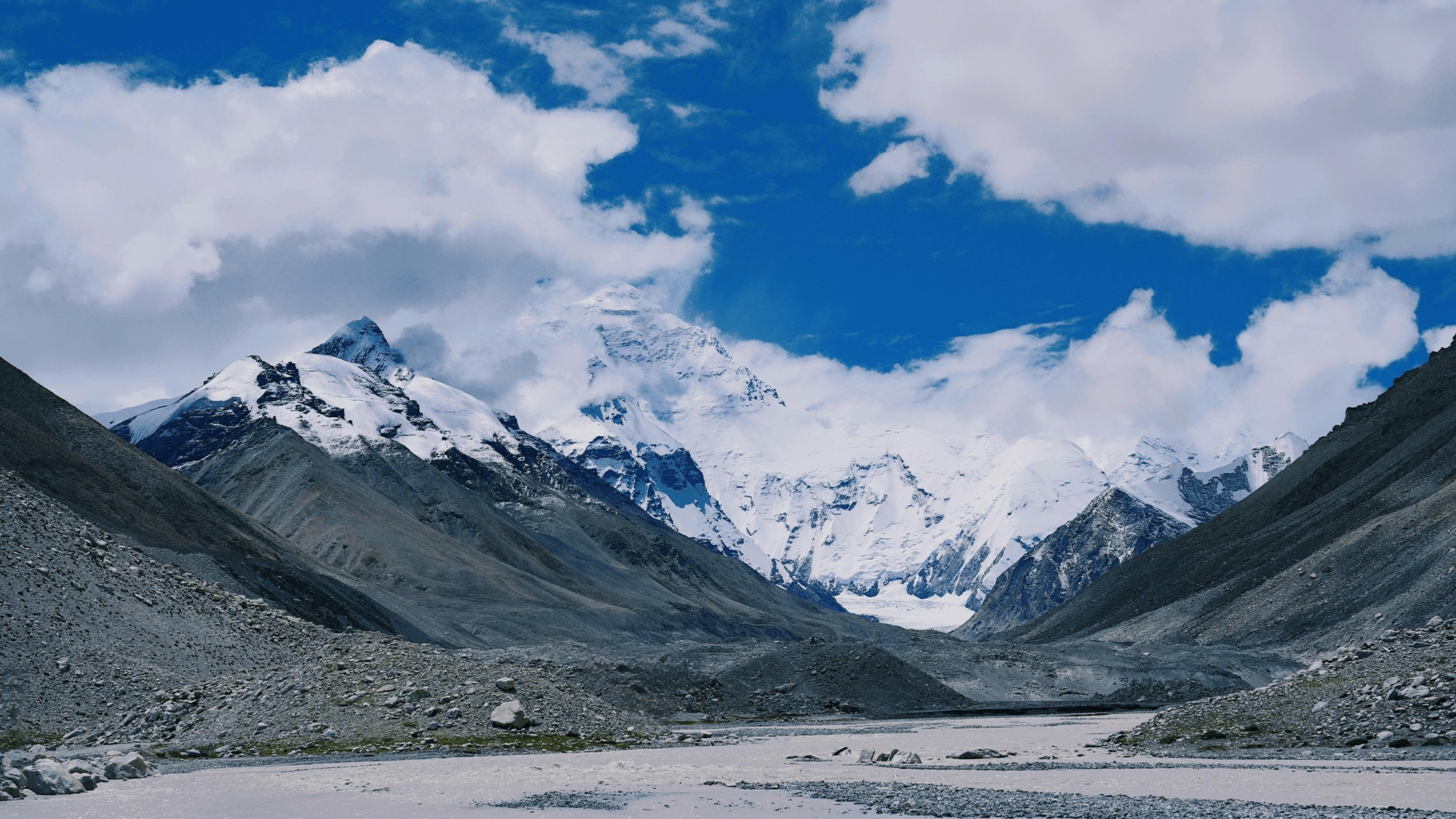Earth’s tallest mountain is getting even taller. An eroding river gorge has thrusted Mount Everest higher, as it pulls rock and sediment away from the area. Over the past 89,000 years it is believed to have increased the mountain’s height by as much as 164 feet. The findings are detailed in a study published September 30 in the journal Nature Geoscience.
An already anomalously high peak
At over five miles or 29,032-feet high, Mount Everest is the tallest mountain on Earth. Called Chomolungma in Tibetan or Sagarmāthā in Nepali, the mountain rises roughly 820 feet above the second tallest peak in the Himalayas. It is also considered anomalously high for this mountain range. The next three tallest peaks–K2, Kangchenjunga, and Lhotse–all only differ by about 393 feet from each other in height.
“Mount Everest is a remarkable mountain of myth and legend and it’s still growing,” study co-author and University College London PhD study Adam Smith said in a statement. “Our research shows that as the nearby river system cuts deeper, the loss of material is causing the mountain to spring further upwards.”
[Related: The rocky history of a missing 26,000-foot Himalayan peak.]
This huge height difference can be partially explained by an uplifting force that is caused by pressure from below Earth’s crust. The underground pressure began after a river eroded away a large amount of rocks and soils, a geological effect called isostatic rebound. The rebound occurs when a portion of the Earth’s crust that loses mass flexes and “floats” upwards due to the intense pressure of the liquid mantle below. This pressure is greater than the downward force of gravity after the loss of mass.
Isostatic rebound is a fairly gradual process, moving only a few millimeters per year, but can make a significant difference to the Earth’s surface over time.
Let the river run
In this new study, the team used erosion data to create numerical models that simulate the evolution of the nearby Kosi River network. Their models show that Mount Everest grew by roughly 50 to 164 feet over the last 89,000 years, after the Arun River merged with the Kosi river network.
Currently, the Arun river runs to the east of Mount Everest. It then merges downstream with the larger Kosi river system. Over thousands of years, the Arun has carved out a substantial gorge along its banks, washing away billions of tons of sediment and earth at the same time.
“An interesting river system exists in the Everest region. The upstream Arun river flows east at high altitude with a flat valley,” study co-author and China University of Geosciences geologist Jin-Gen Dai said in a statement. “It then abruptly turns south as the Kosi river, dropping in elevation and becoming steeper. This unique topography, indicative of an unsteady state, likely relates to Everest’s extreme height.”
Drainage piracy
Mount Everest is also not the only spot that is affected by this uplifting. Neighboring peaks including the world’s fourth and fifth highest peaks–Lhotse and Makalu–are also inching upwards. The same isostatic rebound is boosting these mountains by a similar amount as it is doing to Everest. However, because Makalu is located closest to the Arun River, the team believes it is seeing a slightly higher rate of uplift.
“Mount Everest and its neighboring peaks are growing because the isostatic rebound is raising them up faster than erosion is wearing them down,” study co-author and University College London geochemist Matthew Fox said in a statement. “We can see them growing by about two millimeters a year using GPS instruments and now we have a better understanding of what’s driving it.”
[Related: There might be underground ‘mountains’ near Earth’s core.]
By studying the erosion rates of the Arun, the Kosi, and other rivers in this region, the team were able to pinpoint that the Arun river joined and merged with the Kosi river network about 89,000 years ago. During this natural process called drainage piracy, more water was funneled through the Kosi river. Its erosive power increased with the water levels and took away the area’s soils and sediments. As more of the land washed away, an increased rate of uplift was triggered, pushing the mountains’ peaks higher and higher.
“The changing height of Mount Everest really highlights the dynamic nature of the Earth’s surface,” study co-author and China University of Geosciences geologist Xu Han said in a statement. “The interaction between the erosion of the Arun river and the upward pressure of the Earth’s mantle gives Mount Everest a boost, pushing it up higher than it would otherwise be.”

